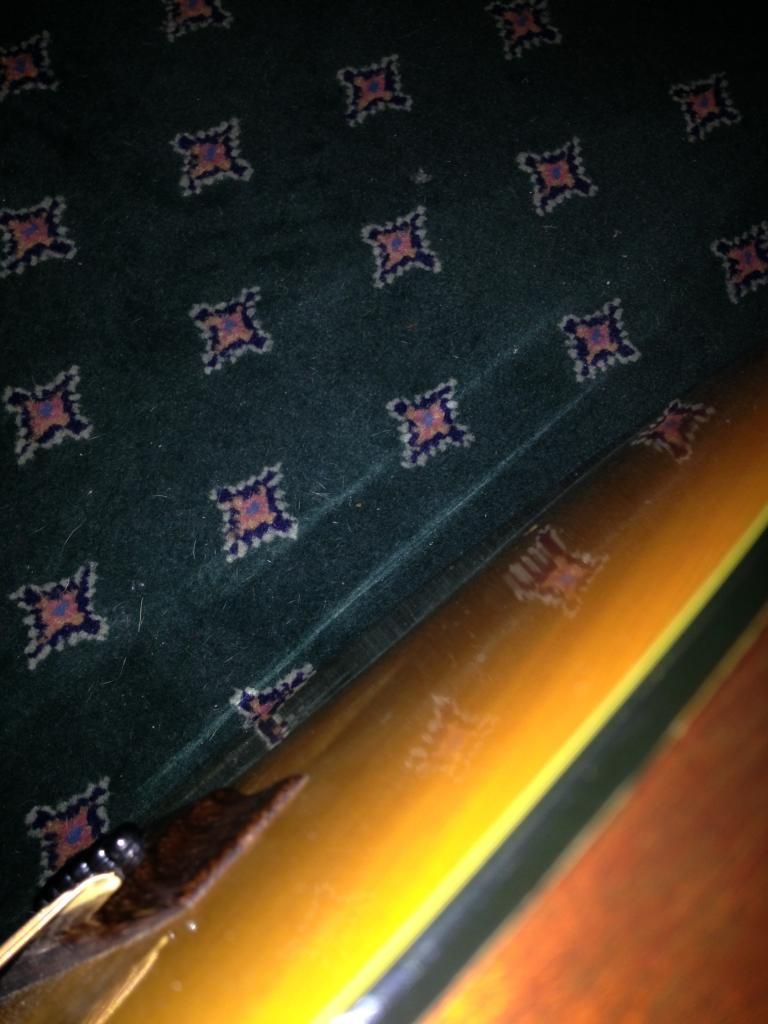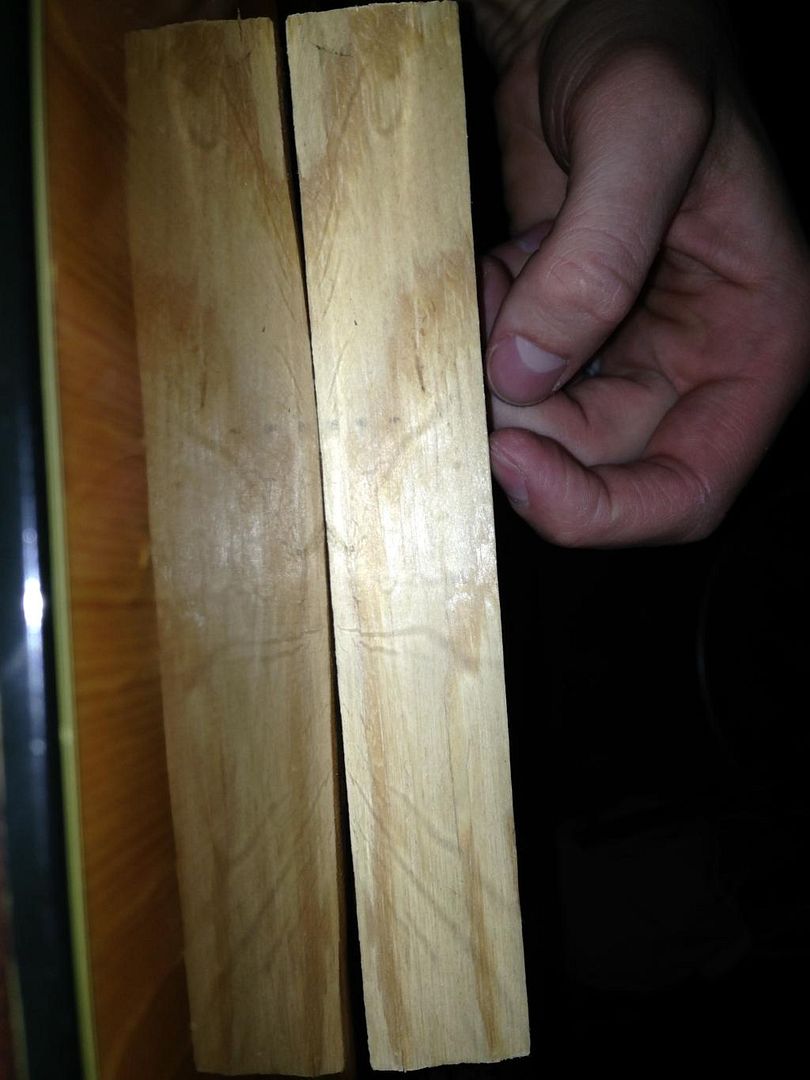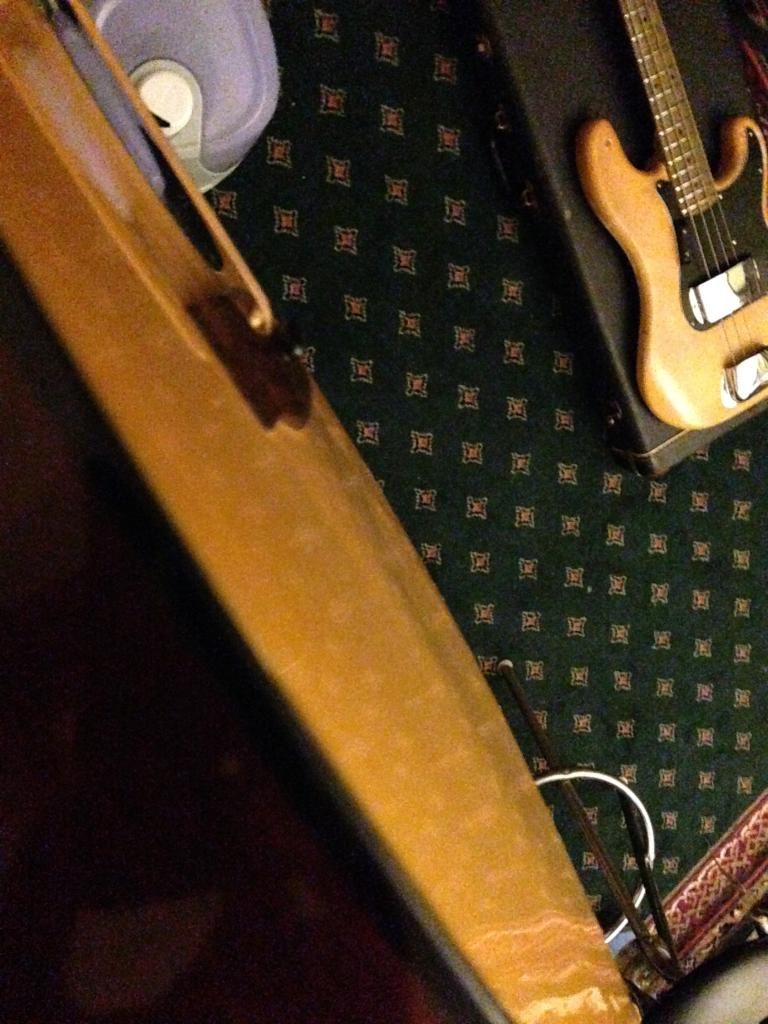I guess this happened because to thick a string was left on the guitar for too long? What are your thoughts? I am not sure if it ever had bridge work done. I don't think it has. The belly is just below the bridge and it only spans about 3"-4" below the bridge and about the length of the bridge. I tried to attach pictures not sure if you can tell what's going on.
Views: 350
Replies to This Discussion
-
Have you checked the braces and bridge plate? The belly/deformation looks pretty concentrated to me, makes me wonder if there's something going on inside.
-
That is an unusually localized bulge. Have you checked the braces and bridge plate underneath?
Also - maybe it is the angle of the photos, or just me totally wrong - but is that bridge a bit oversize for a Martin? If so has it been repaired for some earlier defect that is now showing up again?
Mark
-
I think the bridge is orginal. I'll take some measurements when I get home. I'll do another more thorough assessment of the bridge plate and braces but I didn't I find any issues when I inspected it before. Here is another picture I happened to have on me. I'll take some pictures and measurements tonight. Around 7 EST.
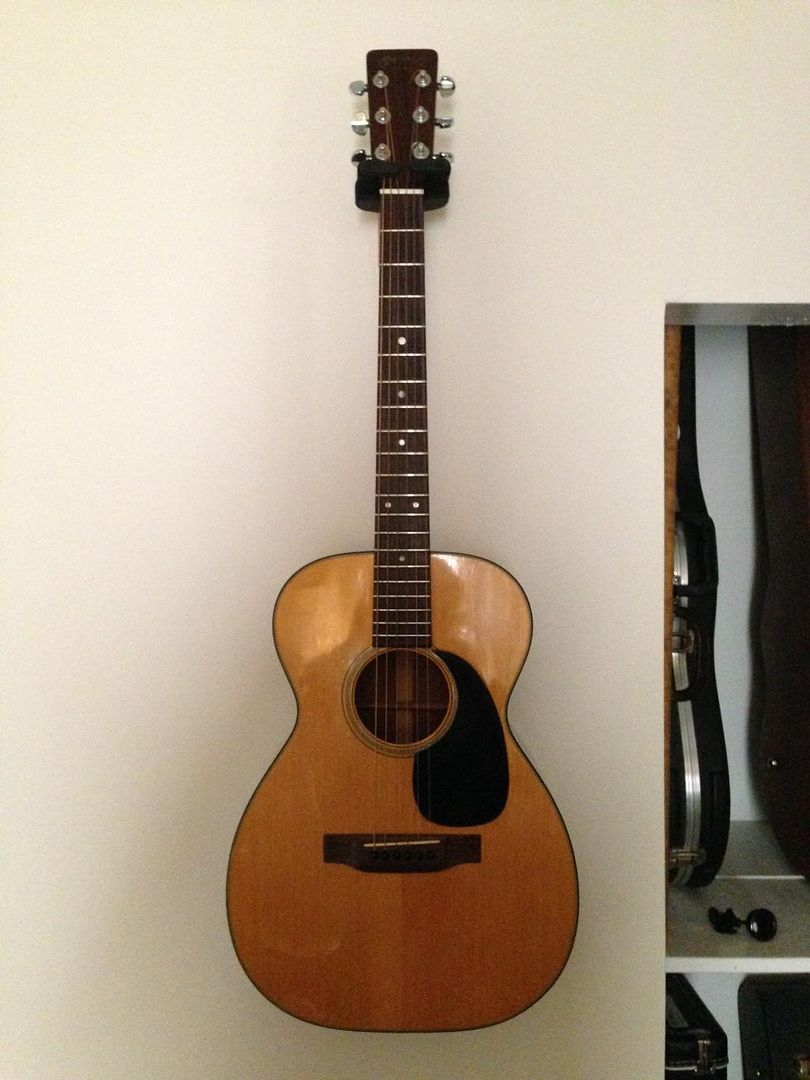
-
Here are a few pictures. I'm not sure what kind of bridge plate these came with. Obviously there is a rosewood with a rosewood string ball patch. It looks like it was done nicely. It also looks like there was some braces that were glued also a decent job other than the small spot you can see I put a feeler gauge in. That is the only spot it will not move further through the brace or side to side it's just big enough to fit the feeler gauge in. The feeler gauge is a .004
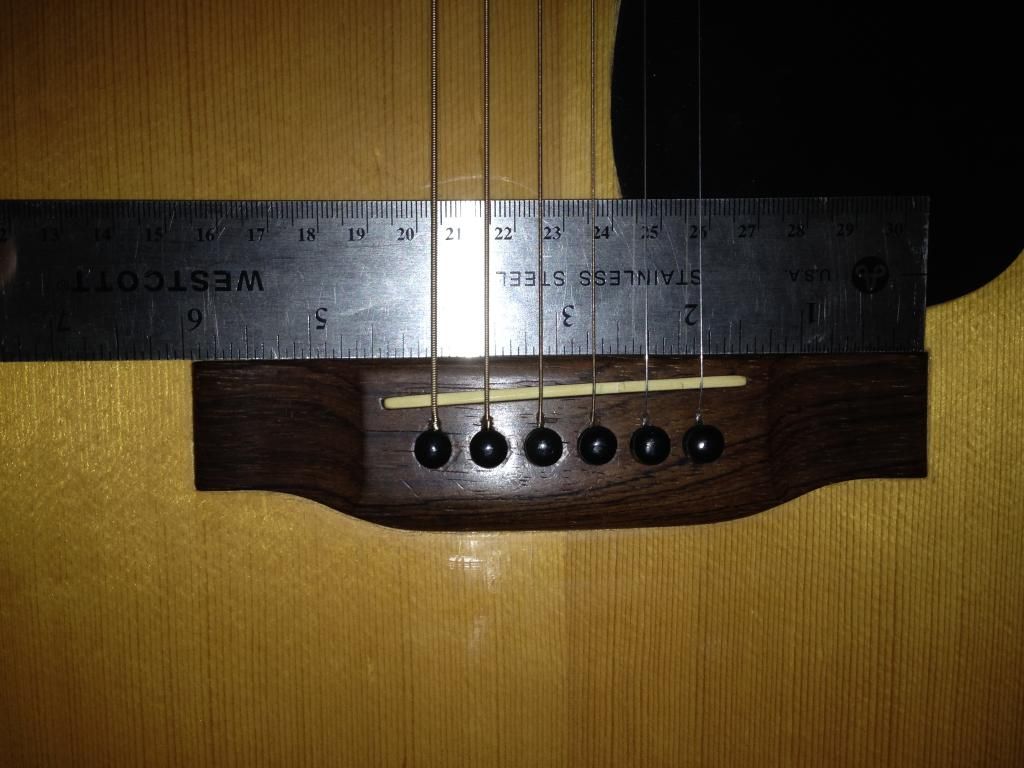
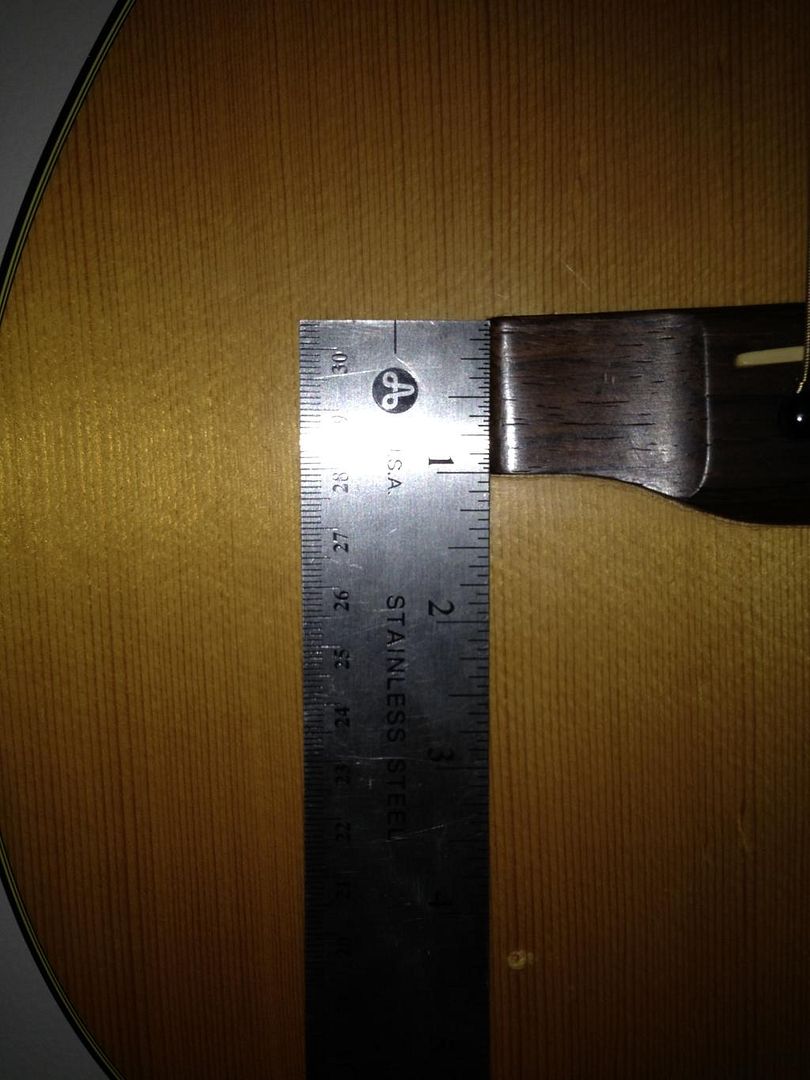
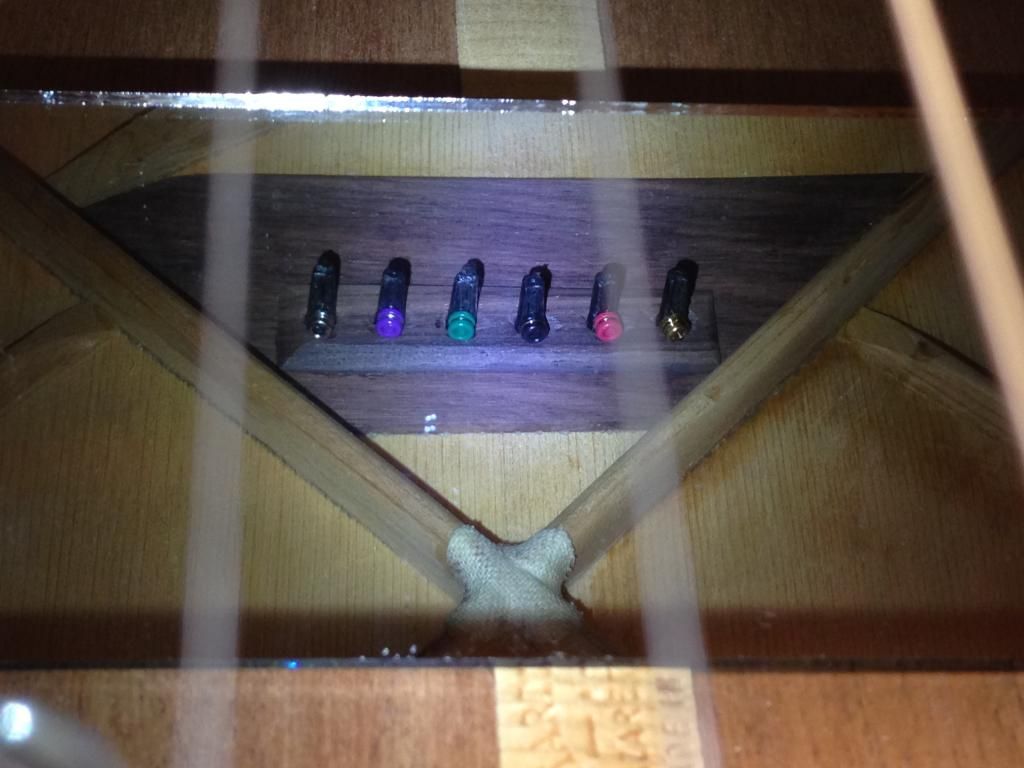
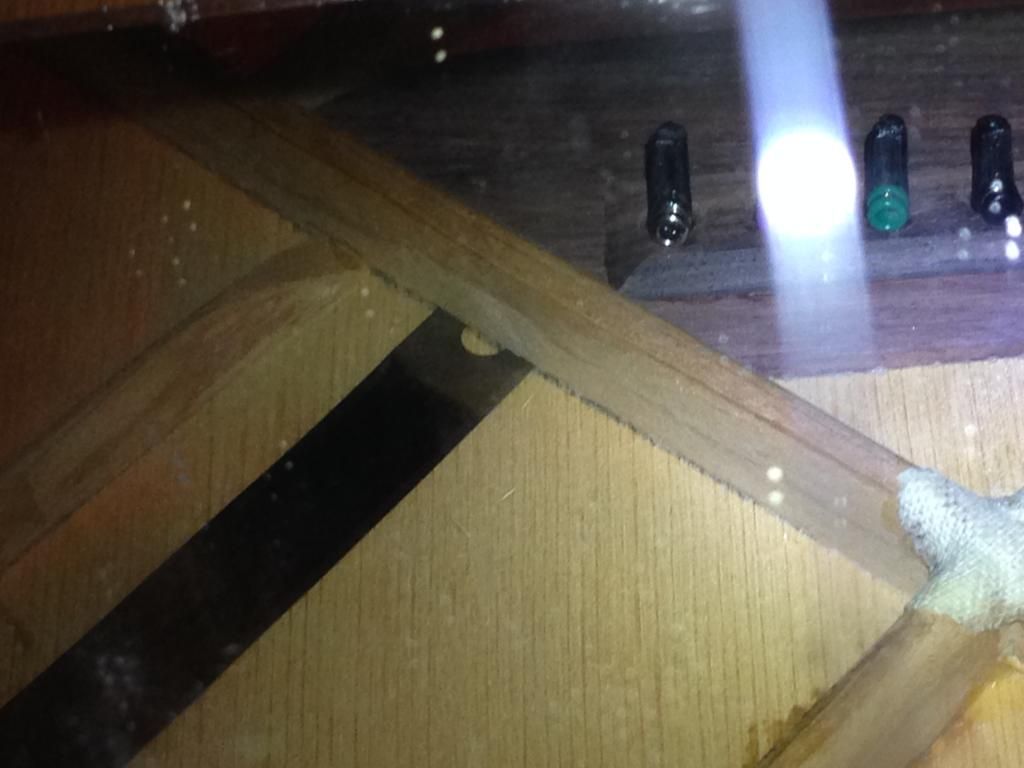
-
It definitely didn't come out of the factory with that bridge plate. But it does look like a good repair job. Maybe it had a really bad belly or some other structural problem and it was "fixed" to this state, which is not too bad.
I recant my suggestion that the bridge itself looks big. The photos with ruler make it look pretty standard.
If it has good action, plays well and it is stable, it is probably not too much of a problem. We all get a bit of a belly over time. Nothing to be ashamed of.
-
If I may chime in, there doesn't really appear to be very much saddle exposed. So I think the saddle was lowered to improve the action. When this was done, the string wrappings were creeping onto the saddle. I propose that rosewood patch is actually a nicely executed spacer to keep the wrappings away from the saddle.
Nice guitar. Only 175 of them made that year.
-
I know the pictures appear to show a low saddle, but it's not its a decent level I'm not sure of the measurement but it's nit "Reset" low. That's cool that there was only 175 of them made. I live it its a great guitar I probably paid a little more than I should have 1950 but I like it a lot so I'm happy. I'm going to replace the pickguard to a more period correct... Tortoloid?
-
The black pickguard IS the '"period correct" pickguard for that guitar. The RW bridge plate (perhaps not that specific one) is also the correct material for a 70's Martin. This instrument was made in Martin's worse quality period. Personally, I wouldn't have given more than $650-800 for it.
Having said that: If it speaks to you.. that's ALL that counts.
If you wish to CONVERT it's cosmetics to look like an instrument from the late 40's:
Correct the headstock shape. By the 1970's, Martin's headstock template was sooooooooo worn that it spawned a whole slew of ugly "too rounded" headstock Martin's. In fairness, this was also the period where they went from making a few thousand instruments a year to making over 10,000 a year to keep up with the "CSN&Y" inspired demand for their instruments.
Get rid of those gawd-awful Grover Rotomatics. Grover's 18-1 Sta-Tites are the working man's Waverly for well under $50. You'll also need conversion bushings.
Replace the bridge plate with one made from Maple. Also, getting rid of the well executed added pad will likely dramatically improve the guitar's overtones.
I second Josh's theory on the bridge plate reinforcement. I also agree that a higher saddle will give you more string break angle. This may require yet an additional reset.
We all have to remember that just because a guitar had its neck reset, it doesn't guarantee that it was done correctly. Also, 70's Martins came with a factory action of about 3/16-1/4" at the octave. Yep, they were nightmares for the right hand.
Again, nice axe & BEST of luck :)
-
Thanks a lot Paul and everyone else for the info. Im still learning all the exact specs on different period guitars. I'm young so I still have ALOT to learn. I will probably take your advice and do all of those modifications. Including a neck reset. One step at a time though. I haven't done any resets on "quality" guitars, only Harmonys, silvertones, and the like. This could be the next step though.
To recap I feel as though everyone thinks from the information I have been able to provide that this belly is probably just a product of a bigger problem that was repaired and this is what is left of the old damage. And that this very well may be something that is "stable" and not able to be repaired?
© 2025 Created by Frank Ford.
Powered by
![]()

